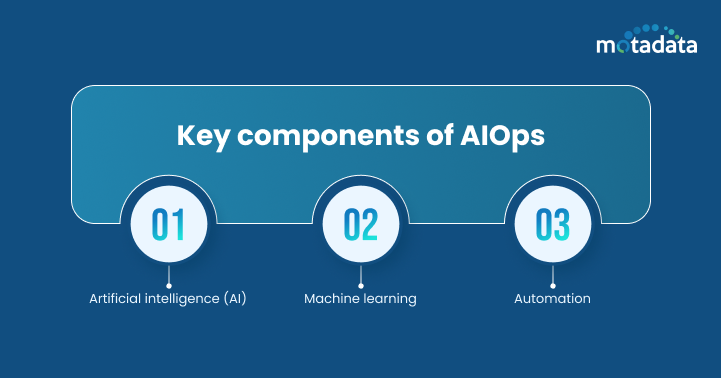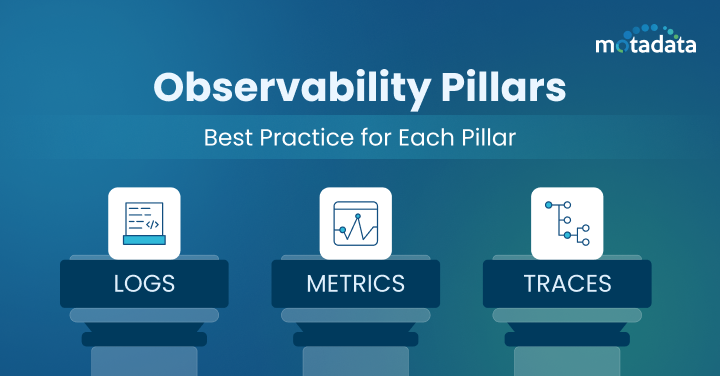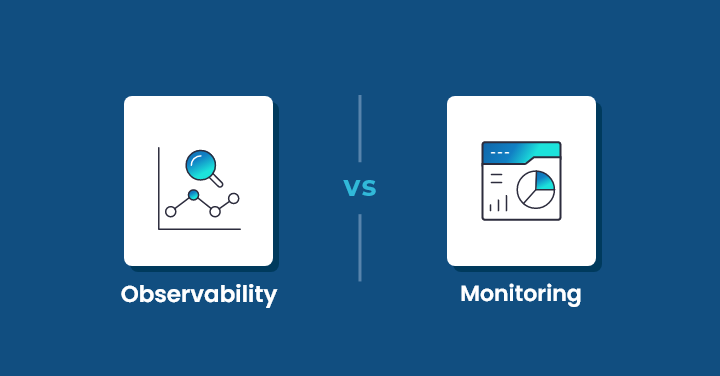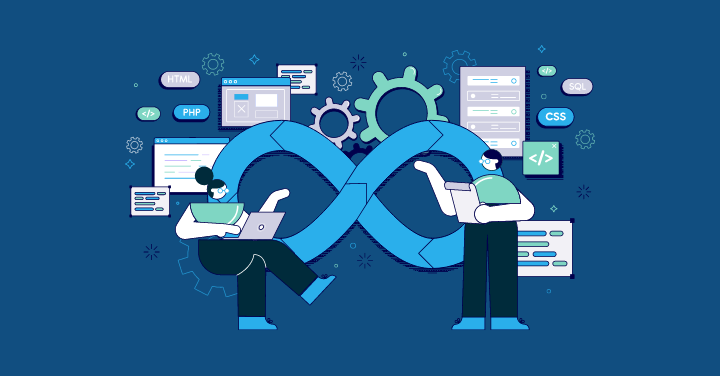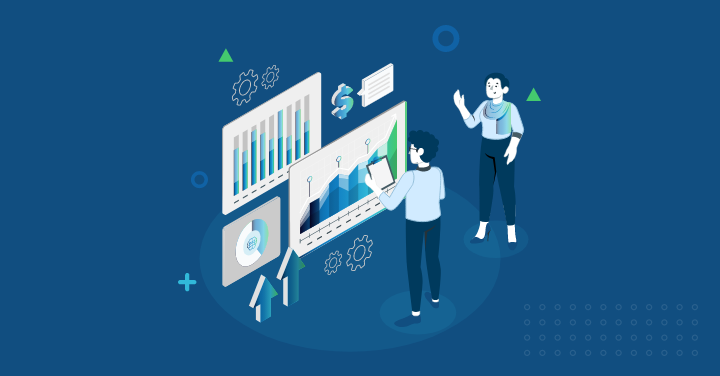Competition amid businesses is growing strict with the advancement and adaptation of new technologies.
Further, managing vulnerabilities and application performance in modern IT operations with traditional monitoring practices is becoming difficult .
AIOps and observability, in such a case, are the two best strategies to implement for overall business success. The two buzzwords have gained much attention in the past few years due to their unique contribution to IT and business operations.
Managing increasing IT infrastructure complexities with essential monitoring tools was not possible. Hence, observability was introduced, allowing IT teams to gain detailed insights into the system’s behavior and address complex issues in real-time.
AIOps, on the other hand, helped reduce human error by automating tasks. Further, its implementation enabled IT teams to streamline incident resolution responses better and manage alert systems.
Both concepts play crucial roles in enhancing system reliability and operational efficiency but differ in various aspects.
AIOps uses artificial intelligence (AI) and machine learning (ML) practices to automate and optimize IT operations; observability, on the other hand, provides deep insights for quick troubleshooting.
Let’s learn the key differences between AIOps and observability and understand their benefits in detail. Then, we will explain how AIOps and observability can complement each other to achieve operational excellence.
What is AIOps?
AIOps (Artificial Intelligence for IT Operations) is a new concept that transforms IT teams’ daily operations by incorporating AI and ML practices.
Unlike traditional practices, the new concept focuses on automating tasks, prioritizing alerts, managing complex IT operations, improving IT response resolution, and enhancing overall efficiency.
By implementing this concept into IT operations, businesses can faster analyze extensive data, identify real-time patterns, and address problems before they impact end-user experience. AIOps tools can further predict issues and better manage IT resources.
Key components of AIOps:
Some of the key components of AIOps that play an essential role in improving IT operations include:
Artificial intelligence (AI)
Artificial intelligence (AI) helps systems analyze and understand big data, identify patterns, predict potential problems, and address new challenges in the IT environment.
They allow IT teams to process data at scale and identify the root cause to minimize disruptions and save time.
The AIOps tools can even pinpoint anomalies in systems at an early stage, thus preventing users from getting affected due to minor faults in the system.
Machine learning
Machine learning (ML) is another key component that plays a vital role in running AIOps platforms. Its algorithms help identify patterns by continuously learning from historical data, user feedback, and real-time system behavior.
This dynamic learning process helps refine predictions and improve the accuracy of incident detection. IT teams can stay ahead of their competitors using ML-driven predictive analytics. It will further help boost operational efficiency and reduce service interruptions.
Automation
Automation is the backbone of AIOps, enabling repetitive tasks like log analysis, ticketing, and incident remediation to be handled without manual intervention.
By introducing automation into IT operations, IT teams will stop using manual methods and reduce error rate. They also save time and guarantee faster resolution times.
Main Benefits of AIOps
- Proactive incident detection: AIOps involves predictive analytics that allows software developers and experts to identify the problem much earlier. Further, it helps them respond to detected incidents in real-time, troubleshoot the issue, and prevent them from impacting the customer experience.
- Automated response and remediation: Helps IT teams run through large data sets and identify and resolve issues automatically without wasting time, thus reducing the mean time to resolution (MTTR). With this, IT teams can also focus on other crucial areas for smooth operations and performance.
- Enhanced IT efficiency: Automates tasks like patching, backups, and tuning system performance to save time, avoid errors, and fasten the process. Further, it provides valuable data insights for better decision-making.
What is Observability?
The observability concept helps software developers and IT operations teams gain detailed insights into the performance of complex systems, distributed applications, and microservices.
The practice analyzes key performance indicators, log data, traces, and external outputs to get a closer and more precise understanding of system behavior and performance.
It combines telemetry data, like logs, metrics, and traces, to create a clear picture of system health, find root causes, and address issues early to improve overall system performance.
What are the three pillars of observability?
The three main pillars of observability through intelligent ITops:
Logs
Logs are detailed event records that happen within an organization. IT teams use these logs to get more visibility into system operations, security issues, and potential errors. By analyzing this data, IT teams can identify the underlying cause of the primary mistake.
Most businesses with complex network systems, cloud services, etc., record large data sets for future analysis. IT teams can use this total system data or records to perform quick analysis.
The data is collected from multiple sources, so consolidating and aggregating it in a standard location is essential for faster analysis and troubleshooting.
Many log management systems also integrate observability tools to connect logs to other forms of data. This allows teams to view the total system activity easily. Ensure you pick the right log management solution and find errors early.
Metrics
Metrics are numerical representations that show how well a system is working. They provide insights into resource usage, performance status, and system health.
From tracking memory usage to learning how fast applications respond, you can analyze this data using metrics. They offer a high-level view of system health, error rates, and delays that can impact user experience.
However, simply looking at metrics is not sufficient. Using metrics alongside other forms of data, such as logs and traces, allows for a more complete view of system health.
This comprehensive view lets IT staff understand what goes wrong and how to resolve issues successfully. Administrators can also use these numerical data to track trends and other changes in a system over time.
Traces
Traces make it easier for IT experts to track how a single transaction or request moves through the entire distributed system.
It provides end-to-end visibility into different components and services. An organization can uncover performance limits, latency concerns, and bottlenecks by tracking requests across several services. Thus making it easier to find the source of the problem and address issues in real-time.
During monitoring, administrators use these telemetry data to analyze the system’s performance and track resource utilization quickly.
Observability is a more expanded version of essential monitoring practice as it helps determine the problem’s root cause and application dependencies.
It collects, correlates, and analyzes data to determine how it relates to and works with other data. Businesses must incorporate the expanded version, especially with large, complex systems, as it is difficult to identify problems with basic practices in the challenging IT environment.
Main Benefits of Observability (Intelligent ITOps)
- Deeper insights into system behavior: Enables IT teams to understand the complex ways all components interact and perform. They help identify performance problems and resource usage and aid in capacity planning. Further, professionals can reduce huge costs and MTTR with deeper insights into system behavior.
- Improved troubleshooting and root cause analysis: Observability collects, gathers, and analyzes data from logs, metrics, and traces, which helps identify and understand where problems come from. It provides a detailed view of applications and their dependencies. Thus, it helps fix the real issues instead of treating the symptoms. Further, by exercising observability practices with AIOps, businesses can troubleshoot matters identified faster.
- Enhanced system performance: With real-time incident resolution and efficient resource usage management, observability helps businesses improve user experience and reputation. Further, the detailed information helps IT experts make wise choices and plan an overall strategy for smoother operations in the future.
Key Differences Between AIOps vs Observability
AIOps vs Observability are the two key concepts that make it easier for IT professionals to fix system errors faster.
The leading role of AIOps and observability practices is to improve system efficiency and reliability, yet they differ in the following aspects:
Focus:
AIOps uses artificial intelligence and machine learning algorithms to detect, diagnose, and resolve incidents faster.
Automation, another key component of this tool, allows businesses to reduce manual intervention by eliminating repetitive tasks and automating workflow. It helps smooth the process and save time.
On the other hand, Observability focuses on generating deep insights into a system’s behavior to track errors in complex systems at an early stage.
It collects data from logs, metrics, and traces to understand distributed services better and monitor and troubleshoot issues.
Scope:
AIOps has a broader scope than other practices as it covers various tasks, including aggregating and correlating data from different sources, identifying patterns, and detecting the root cause of the problem.
Further, it helps predict future resource needs and makes wise choices. AIOps enables organizations to manage complex IT ecosystems efficiently by addressing various tasks.
Observability, on the other hand, has a narrower yet more focused scope. It analyzes event records, quantitative measurements (CPU usage, memory consumption, etc.), and service request paths to provide actionable insights into how a system operates and diagnose system health.
Technology:
AIOps uses AI and ML algorithms to analyze significant data sets, monitor behavior, identify problems, and trigger automated responses.
AIOps systems often integrate with existing IT monitoring tools, IT Service Management (ITSM) platforms, and other enterprise systems. However, their core strength lies in using AI and ML to manage IT operations proactively.
Conversely, Observability relies on the three pillars – log, metrics, and traces. It uses specialized monitoring tools and technologies to collect, aggregate, and interpret system data.
While Observability tools do not inherently include AI or ML capabilities, they are essential for providing the raw data that AIOps systems can use.
AIOps and Observability: A Synergistic Relationship
The emergence of AIOps (Artificial Intelligence for IT Operations) and observability framework make it easier to manage IT complexities by providing deep insights and actionable intelligence.
They differ in multiple ways, yet together, they form a synergistic feedback loop. Observability feeds AIOps algorithms with enriched and contextually relevant data.
Also, AIOps uses this data to provide actionable insights, guiding observability efforts to focus on critical areas. This integration accelerates problem resolution and ensures system stability and scalability.
The combination of these two key concepts also unlocks new possibilities for IT operations:
For example, in the case of Incident Management, Observability tools monitor systems in real-time, identifying anomalies and providing detailed logs, metrics, and traces that highlight the root causes of incidents. AIOps correlates events across systems, identifies patterns, and automates remediation actions.
For instance, if a database latency issue is detected, AIOps can suggest or execute scaling actions based on predefined rules. This leads to faster resolution and reduced mean time to resolution (MTTR).
Organizations must understand that AIOps and observability are not independent solutions but integral components of a modern IT strategy. A hybrid approach that combines their strengths ensures real-time insights, intelligent automation, and resilience.
Observability ensures comprehensive visibility, while AIOps delivers automation, enabling IT teams to focus on strategic initiatives rather than firefighting issues.
Further, the integration allows IT teams to shift from reactive problem-solving to proactive prevention. For example, by identifying trends in system behavior, AIOps can alert teams to take corrective measures before incidents occur or escalate.
The relationship between AIOps and observability is genuinely synergistic. Observability provides the raw data and insights necessary for understanding complex systems, while AIOps enhances these insights with AI-driven intelligence and automation. Together, they can help build an efficient and scalable IT environment.
Conclusion
AIOps and observability are critical for the modern IT system, but both have their roles and purposes. While AIOps focuses on automating and optimizing IT workflows using AI and ML, observability emphasizes understanding and monitoring system behavior through logs, metrics, and traces. These two are distinct yet complementary technologies that address different aspects of IT operations.
If you go deeper into both concepts, you will realize that Observability data can be used to feed AIOps systems that further aid organizations in getting a more comprehensive picture of system health.
Similarly, AIOps can rely on the collected insights to reduce alarm noise, predict and prevent disruptions, and automate IT procedures. By integrating both approaches, organizations can achieve a balanced IT strategy that ensures high availability and optimal performance.
With time, it has also been predicted that using AIOps and Observability will likely become common. Thus providing a better monitoring option for organizations to tackle issues and run IT processes more smoothly.
Motadata, a leading platform, provides AIOps solutions to businesses and streamlines their IT Operations with AI/ML and intelligent automation features.
The powerful allows businesses to capture data from different relevant sources and build context through compelling correlating events. Enjoy the free trial to manage your modern IT infrastructure complexities.
FAQs:
AIOps focuses on automating IT operations using AI and ML, while observability aims to provide deep insights into system behavior using logs, metrics, and traces.
Yes, AIOps and observability complement each other. Observability provides granular data, which AIOps processes to automate and optimize IT operations. With this teamwork, businesses can make IT operations smoother.
Artificial intelligence, Machine learning, and Automation are the key components of an AIOps solution. With the help of these elements, businesses can improve their IT operations and make data management more effortless.
AIOps and Observability technologies will continue to evolve, with AIOps incorporating more advanced AI capabilities and observability, including more AI-driven analysis, and expanding its scope to cover increasingly complex distributed systems.
To improve observability, ensure comprehensive logging, implement distributed tracing, and monitor key metrics. Collect detailed telemetry data using advanced monitoring tools to correlate data and gain actionable insights.



